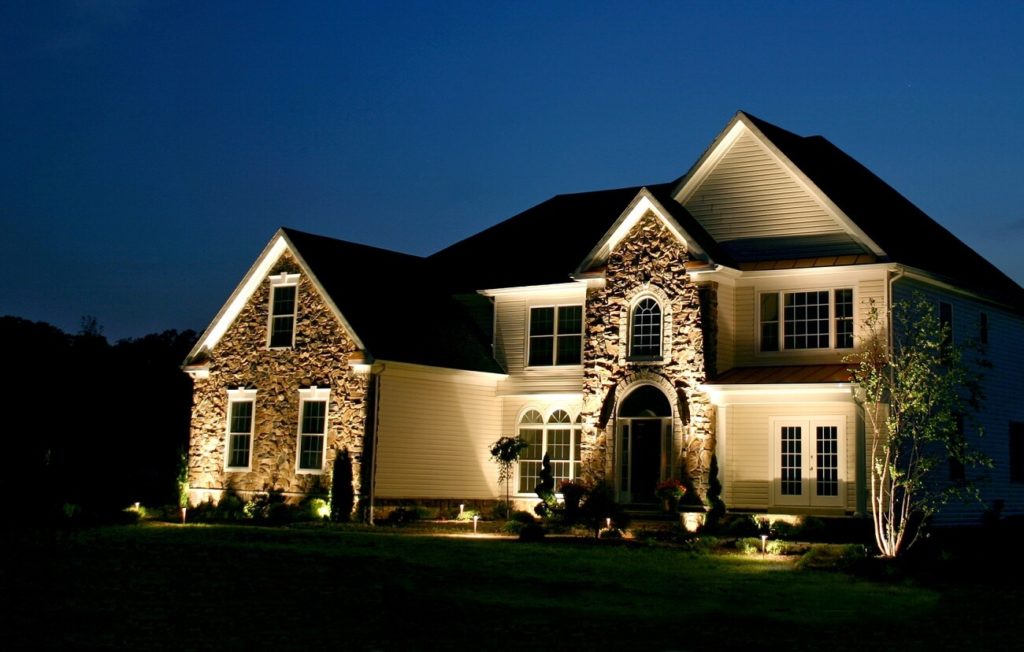Today is common knowledge that outdoor lighting can have a great impact on the look of your house and its feel. Whether it is for aesthetic purposes or safety ones, external lights can completely change the way your house is perceived and experienced.
And one of the most interesting aspects of outdoor lighting is that nowadays we have an incredible variety of light fixtures and options when it comes to types of lights, designs, functionality, colours, and even power sources. So, how do you decide what’s the best outdoor lighting option for your house?
Your friends at Puk are here to help you make wise decisions and start illuminating your outdoor areas in the right way. Are you planning to have a social area to enjoy with the family? Or maybe you want to highlight some landscaping or architectural features of your house and lawn? Do you need a path illuminated to walk safely in the dark? Whatever your needs, there is an outdoor lighting option!
Reasons to choose outdoor lighting
Several reasons make outdoor lighting an element to consider. Not only can you improve the look of your house, but it can even impact the value of your home.
The look of your house
When we look at a house at night, we immediately make up our minds about it. We can tell if the house is cared for, lived in if it’s safe or not. In this case, outdoor lighting can become a welcoming tool for guests and keep thieves away. Using lights in a smart way can help make your house more appealing and beautiful.
Safety
We have already mentioned that outdoor lighting can keep thieves away. This is an aspect not to ignore. When a house is dark, it’s easier for burglars to find a way in, while lights tend to create a safer atmosphere and will make anyone considering breaking into your home think twice.
Another side of safety it’s the use of your property in the dark. If there are paths, you want them illuminated so there is no risk of tripping or falling. Same with a swimming pool, for example, that can be a risk for the young ones in the family in the dark.
House value
With the right outdoor lighting, homeowners can actually boost the price of their real estate. Night pictures in listings tend to attract a lot of attention, maybe because the light highlights those areas that you want people to look at.
What types of outdoor lighting are there?
While there are many types of outdoor lighting, from wall lights to security and landscape lights, the first step is to consider the power source you are going to use.
First, we recommend going to LED lights. They are more advantageous than any other options thanks to their long life and low consumption of energy. Many LED lights are low voltage, which is definitely safer for external lights, and the only thing you will need is a low voltage transformer.
Portable lights are also an interesting option if you want to be flexible on your choices and be able to move your lights. Most of them are rechargeable and few use batteries, meaning a more environmentally friendly option.
However, the most planet-friendly outdoor lighting we can think of is without a doubt, solar outdoor lighting. There are some simple inexpensive options of solar lights that can be placed anywhere outside, but there are more long-term options with solar panels, timers, and dimmers. While these are more expensive in terms of installation, they definitely pay for themselves in the short term, offering an outdoor lighting system that is off the grid and won’t bulge into your electric bill.
How to choose the right fixing for the outdoors?
Light fixtures for the outside are designed to withstand the elements. Still, there are different options depending on the conditions of the place you live in. This is called UL rating and there are two main groups here.
First, we have the “damp-rated” fixtures. These are designed to be outside but in a mostly covered area. As the name indicates, these fixtures can deal with moisture and dampness, because after all, they are outside, however they cannot withstand direct rain, for example.
Second, there are the “wet-rated” fixtures. These allow lights to be exposed to all elements, especially rain.
Considering the placement of your lights will determine if you need one type or the other when choosing your fixtures.
Conclusion
While there is still much more to discuss when it comes to outdoor lighting, we have covered the bases for anyone interested in improving their external lights and starting the process of beautification of their homes. Now, more than ever before, there are plenty of options that adjust to a variety of budgets, making outdoor lighting a much more real deal for anyone.

